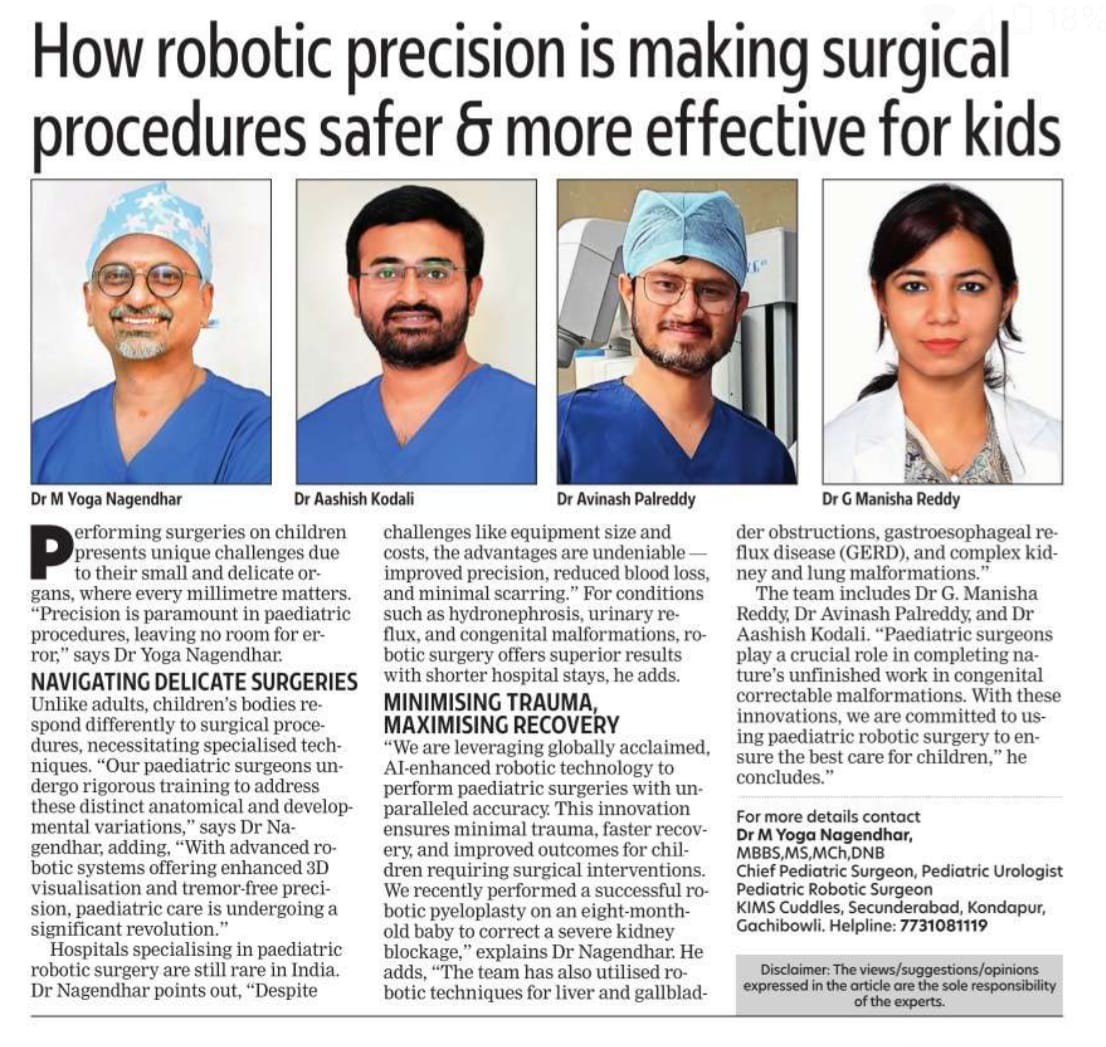Best Pediatric Surgeons in Gachibowli
At KIMS Cuddles in Gachibowli, we take pride in being recognized as the best destination for pediatric surgery in the region. Our team of experienced and compassionate pediatric surgeons is dedicated to providing top-notch surgical care for infants, children, and adolescents. When it comes to your child's health, trust the expertise and care offered by the best pediatric surgeons in Gachibowli.
Our commitment to excellence is evident in the expertise of our pediatric surgeons. KIMS Cuddles in Gachibowli is home to some of the best pediatric surgeons in the region. Our team is not only highly skilled but also understands the unique needs of pediatric patients, ensuring that your child receives the best possible care throughout their surgical journey.
What is Pediatric Surgery, and What is the Role of a Pediatric Surgeon?
Pediatric surgery is a specialized branch of medicine that focuses on surgical procedures for infants, children, and adolescents. The role of a pediatric surgeon goes beyond the operating room. These specialists are trained to diagnose, treat, and manage surgical conditions specific to the pediatric population. From congenital anomalies to acquired conditions, pediatric surgeons play a vital role in ensuring the optimal health and well-being of young patients.
Difference Between Pediatrician and Pediatric Surgeon
While both pediatricians and pediatric surgeons are essential for children's health, their roles differ significantly. Pediatricians specialize in overall child health, providing preventive care, vaccinations, and managing common illnesses. On the other hand, pediatric surgeons focus on surgical interventions, addressing specific medical conditions that require surgical treatment. The choice between a pediatrician and a pediatric surgeon depends on your child's specific healthcare needs, with both specialists often working collaboratively to ensure comprehensive care.
Best Pediatrician in Gachibowli
In addition to our exceptional pediatric surgical services, KIMS Cuddles in Gachibowli is proud to host some of the best pediatricians in the region. Our pediatricians are dedicated to providing comprehensive and personalized care for your child's overall health. From routine check-ups to vaccinations, our pediatricians are here to support your child's well-being at every stage of development.
Best Pediatric Surgeon in Gachibowli - Your Child's Health in Trusted Hands
When it comes to finding the best pediatric surgeon in Gachibowli, look no further than KIMS Cuddles. Our team of skilled and compassionate pediatric surgeons is committed to providing top-notch surgical care for a wide range of conditions. From minor procedures to complex surgeries, we have the expertise to ensure the best outcomes for your child's health.
Which Hospital is Best for Pediatric Surgery?
KIMS Cuddles in Gachibowli stands out as the best hospital for pediatric surgery in the region. Our commitment to excellence, patient-centered care, and a child-friendly environment make us the preferred choice for families seeking the highest quality surgical care for their children. Trust us with your child's health, and let our team provide the exceptional care your little one deserves.
Best Pediatric Hospital in Gachibowli - Comprehensive Pediatric Care
At KIMS Cuddles, we are not just a hospital; we are a comprehensive pediatric care center. Our services go beyond surgical interventions, encompassing a holistic approach to pediatric health. From diagnostics to post-operative care, our team is dedicated to ensuring the best possible outcomes for your child's health and well-being.
Book an Appointment Online
Booking an appointment with our pediatric surgeons or pediatricians in Gachibowli is quick and easy. We understand the value of your time, and we strive to provide a seamless and efficient process for scheduling appointments. Visit our website to book an appointment online and take the first step towards ensuring the best surgical and medical care for your child.
In conclusion, KIMS Cuddles in Gachibowli is your trusted destination for pediatric surgery and comprehensive pediatric care. With the best pediatric surgeons and pediatricians in the region, we are committed to providing exceptional healthcare services for your child's optimal health and well-being. Book an appointment online today and experience the difference of pediatric healthcare at KIMS Cuddles in Gachibowli.

















